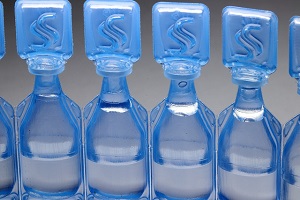Tears play a vital role in maintaining eye health, providing moisture, nourishment, and protection to the ocular surface. Let me break down dry eye syndrome for you in a more understandable way.
Causes of Dry Eye Syndrome:
Dry eye syndrome, also known as dry eyes disease or keratoconjunctivitis sicca, is a common eye condition characterized by insufficient tear production or poor tear quality, leading to an inadequate lubrication of the eyes.
- Age: Dry eyes becomes more prevalent with age, particularly in individuals over 50, as tear production tends to decrease over time.
- Environmental factors: Dry and windy climates, air conditioning, heating, and exposure to smoke or dry air can contribute to evaporative tear loss.
- Gender: Women are more likely to develop dry eyes due to hormonal changes, especially during pregnancy, menopause, and certain oral contraceptives.
- Medical conditions: Conditions like Sjögren’s syndrome, rheumatoid arthritis, lupus, diabetes, and thyroid disorders can be associated with dry eyes.
- Medications: Some medications, including antihistamines, decongestants, diuretics, and certain antidepressants, can reduce tear production.
- Prolonged screen time: Staring at screens for extended periods can lead to reduced blinking and, consequently, insufficient tear distribution.
Treatment of Dry Eye Syndrome:
The treatment of dry eye syndrome typically involves a combination of lifestyle changes, self-care measures, and medical interventions. The approach may vary based on the severity and underlying cause of the condition. Here are some common treatments.
- Artificial Tears: Over-the-counter artificial tear drops and ointments can provide temporary relief by supplementing the natural tear film and lubricating the eyes.
- Warm Compresses: Applying warm compresses to the eyes can help improve oil gland function and promote the flow of oils to stabilize the tear film.
- Environmental Modifications: Avoiding dry or windy environments, using a humidifier indoors, and protecting the eyes from drafts can help reduce symptoms.
- Blinking Exercises: Regularly practicing blinking exercises can ensure adequate tear distribution and prevent tear evaporation during prolonged screen use or other visually demanding tasks.
- Prescription Medications: In more severe cases, your eye doctor may prescribe medications like cyclosporine (Restasis) or lifitegrast (Xiidra) to help increase tear production and reduce inflammation.
- Visit your eye doctor: If the problem is severe, your eye doctor may suggest prescription eye drops or other treatments to help your tears flow better.
- Omega-3 Fatty Acid Supplements: These supplements may help improve tear quality and reduce inflammation in some cases.
- Lifestyle Changes: Avoiding smoking and ensuring proper nutrition can contribute to better overall eye health.
If you experience symptoms of dry eye syndrome, it’s essential to consult an eye care professional for a proper diagnosis and tailored treatment plan. They can assess the underlying cause and recommend appropriate measures to manage and alleviate your dry eye symptoms.

